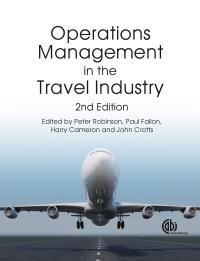2. Evaluate the cultural web of Thomas Cook, as it was in 2011, and as it is...
Question:
2. Evaluate the cultural web of Thomas Cook, as it was in 2011, and as it is currently.
What degree of cultural change was necessary for the business turnaround? Can any of the critical success factors be applied to the change process? From an operational perspective, what impact would these changes have had on the business? Thomas Cook is one of the most well-known travel brands in the tourism and travel industry. Founded in 1841, Thomas Cook himself began the business by operating a single rail journey from Leicester to Loughborough; this has since grown to become a global travel business. However, in November 2011, Thomas Cook shares plummeted by 75%
after the tour operator held talks with banks to increase its borrowing. The company subsequently reported losses of £485 m. The challenges that had occurred during this time, including turbulence in some of the company’s key markets, such as Egypt and Tunisia, and fluctuating oil prices, resulted in it encountering some difficult financial issues. The company made changes to its management team, with Harriet Green taking up the position of Chief Executive and tasked with turning around the business and reducing its overall debt. An overall strategic review of Thomas Cook took place, with radical changes to staffing structures, travel agency closures, rebranding of the business and the development of a clear web-based strategy. Harriet Green has since said that ‘Thomas Cook was not well. The company was very shocked, beleaguered and very confused.’ In 2013, and for the first time in 3 years, the company reported a return to profitability. In November 2014, Harriet Green announced that she would be stepping down from her position as Chief Executive.
Step by Step Answer:






